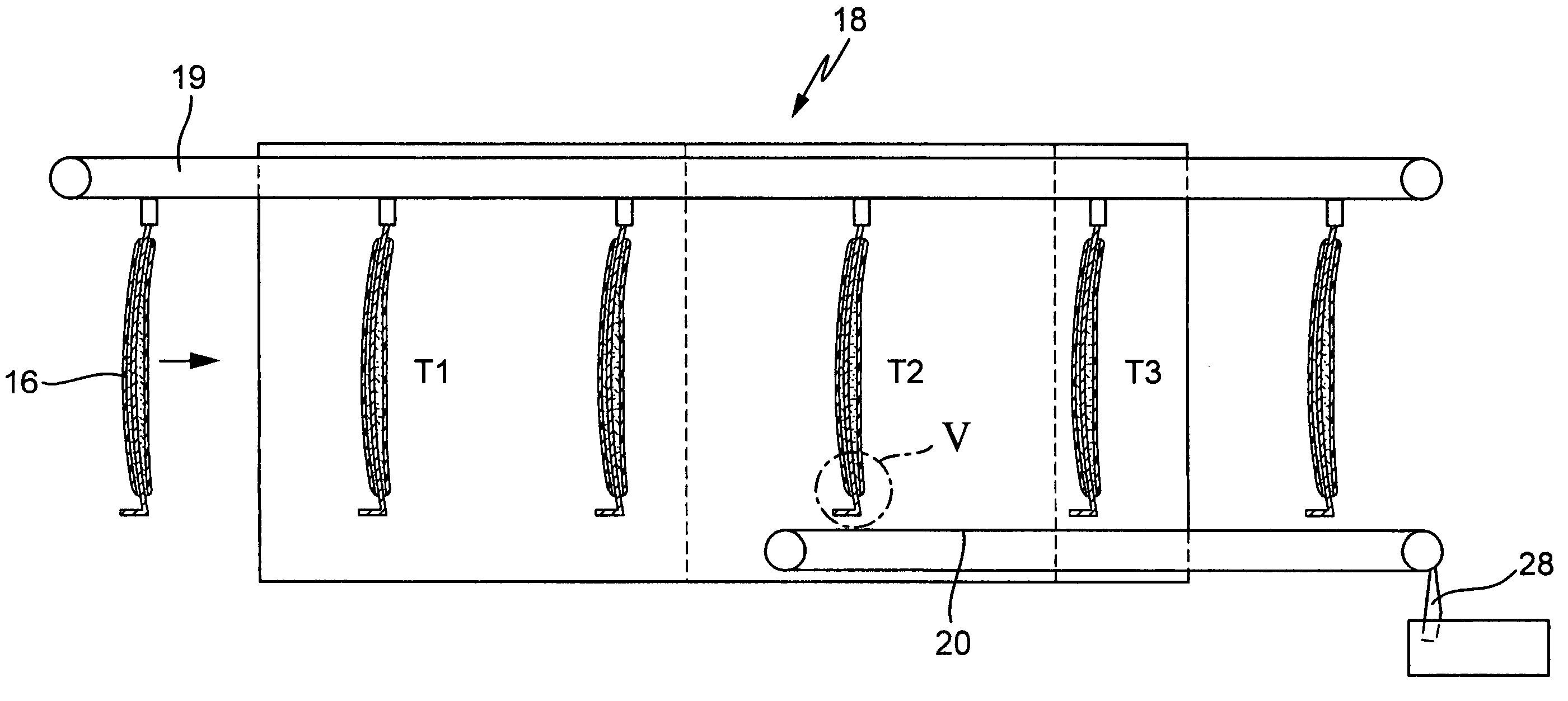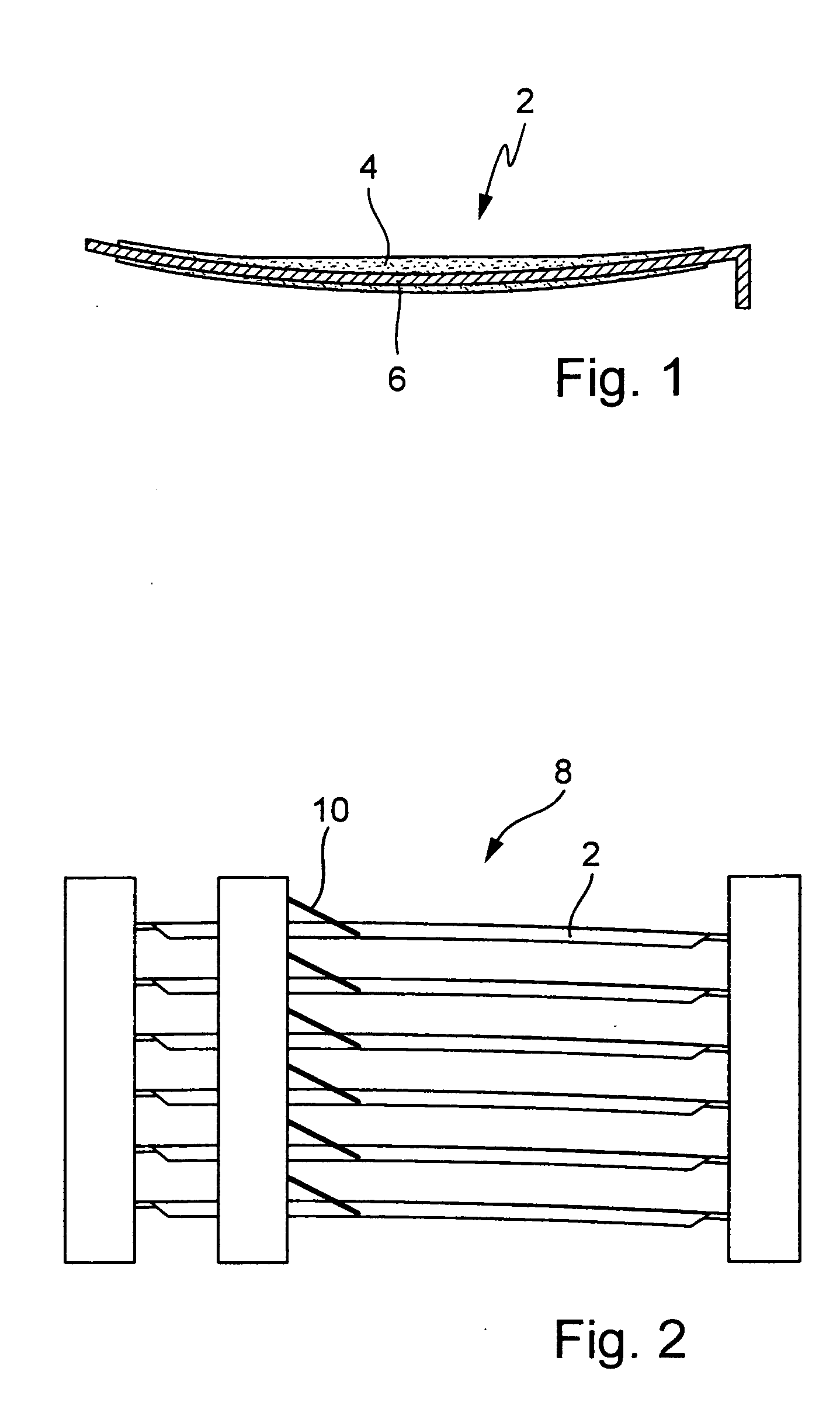Method for producing a component from fiber composite material
a composite material and component technology, applied in the direction of lamination, lamination apparatus, chemical apparatus and processes, etc., can solve the problems of not describing any reliable process production method for such components, complicated measures are required for health and safety and environmental protection, etc., and achieves high surface quality and dimensional stability.
- Summary
- Abstract
- Description
- Claims
- Application Information
AI Technical Summary
Benefits of technology
Problems solved by technology
Method used
Image
Examples
Embodiment Construction
[0034] In FIG. 1, a core 2 which comprises a supporting core 6 and a core 4 of fusible material is illustrated. In order to produce the core 2, the supporting core 6 is inserted into an injection molding machine and encapsulated with a wax. The supporting core 6 can usually comprise a steel tube or an aluminum tube. It should be noted here that the supporting core 6 is of curved configuration. In the case of a solid core of metal, glass or plastic, such a shape could not be removed from a component 36 without destruction.
[0035] A core 2 of this type can be fitted to a suitable winding machine 8 together with a plurality of identical cores. A winding machine 8 is illustrated schematically in FIG. 2. In this case, a plurality of cores 2 are simultaneously provided with a reinforcing fiber 10. As an option, it may be expedient to provide the reinforcing fiber 10 with resin in a dip bath, not illustrated here. This leads to the fiber structure 14 already being impregnated with resin af...
PUM
| Property | Measurement | Unit |
|---|---|---|
| temperature | aaaaa | aaaaa |
| temperature | aaaaa | aaaaa |
| passage time | aaaaa | aaaaa |
Abstract
Description
Claims
Application Information
 Login to View More
Login to View More - R&D
- Intellectual Property
- Life Sciences
- Materials
- Tech Scout
- Unparalleled Data Quality
- Higher Quality Content
- 60% Fewer Hallucinations
Browse by: Latest US Patents, China's latest patents, Technical Efficacy Thesaurus, Application Domain, Technology Topic, Popular Technical Reports.
© 2025 PatSnap. All rights reserved.Legal|Privacy policy|Modern Slavery Act Transparency Statement|Sitemap|About US| Contact US: help@patsnap.com



